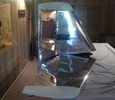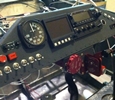


random user submitted photo
Aircraft Lighting
24 posts
• Page 3 of 3 • 1, 2, 3
Re: Aircraft Lighting
I had a positive result when one of my Powerburst strobes stopped working. I contacted Aveo in the US. Damien Esmond returned my emails. He offered to replace my non working strobe or to exchange both of them with the more recent model (for $100, which I elected to do). The new model is reported to be more robust. So far it is working well.
Mervin Friesen
Sonex 122, Jab 2200
378 hours
Mervin Friesen
Sonex 122, Jab 2200
378 hours
-

Friesen5 - Posts: 61
- Joined: Mon Mar 31, 2014 12:54 pm
Re: Aircraft Lighting
In response to my blurb above complaining about the AveoPowerBurst strobe lights. I received a response today whereby they will send me a set of used lights to use until they restock an improved version of the ones that failed and for $100 they will sell me a set of the improved ones. A good deal all the way around.
OneX 107
N2107X
N2107X
- Onex107
- Posts: 506
- Joined: Mon Mar 24, 2014 6:44 pm
- Location: Peoria, IL
Re: Aircraft Lighting
My complaint listed above has been answered. AVEO ENGINEERING has responded with a great offer. Even though the warranty had expired they offered to replace the failed strobes with an upgraded version for $100. And, since they were out of stock on the new ones, they sent me a pair of "display" lights to use until the new stock arrives. Fantastic offer. Communications with companies like this can be very slow. Don't jump to a conclusion like I did and think you are being ignored. Today internet and phone responses have become almost instant, but don't expect that to be true in all occurrences.
OneX 107
N2107X
N2107X
- Onex107
- Posts: 506
- Joined: Mon Mar 24, 2014 6:44 pm
- Location: Peoria, IL
Re: Aircraft Lighting
mike.smith wrote:Note that if you plan to fly at night your lights MUST be TSO'd units to be legal (one of the only things on an experimental that needs to have a TSO). And if you install on the wingtips you need to put them on pods so they meet the angle requirements for viewing: https://www.whelen.com/pb/Aviation/Syst ... ystems.pdf.
This produced an interesting debate in the CERTIFICATED world when LED drop in bulbs became available to replace the incandescent bulbs.
The general OPINON here was that TSO and PMA was NOT a requirement. Meeting the BRIGHTNESS and color temperature requirement of the FARs was the requirement.
In a NON-WRITTEN / NON-OPINON from the Boston FSDO about 4 years back I was asked if the lights were "brighter and the right color?" On confirming this the inspector said he "liked the safety of the brighter lights"...……
--
A similar debate used to occur with the old PAR 36 incandescent landing light bulb. Did you by one from Aircraft Spruce for $60 or the same thing from Tractor Supply for $12? They both met the brightness requirement (as they were the same thing) and could conceivably meet the "Standard Parts" definition.
--
In the end I think we all want to be "BRIGHT" and "SEEN" so I doubt if anyone is going to put in a bulb that is not bright enough for the standards.
YMMV
Graeme JW Smith
-

GraemeSmith - Posts: 939
- Joined: Sat May 18, 2019 8:58 am
- Location: RI
24 posts
• Page 3 of 3 • 1, 2, 3
Who is online
Users browsing this forum: No registered users and 17 guests







